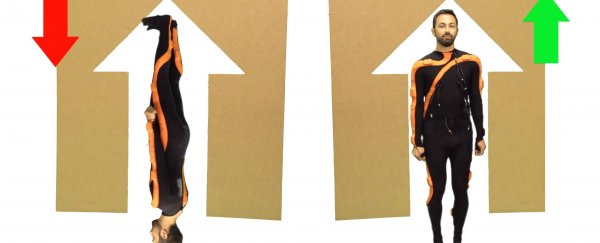
Your brain may hurt a little bit while watching the episode of Veritasium above, but trust us, it's worth it.
In it, creator Derek Muller explains how we know quantum entanglement exists, how it works, and explores whether or not it allows father-than-light-speed communication.
Basically, quantum entanglement states that two particles can be linked, so that what happens to one will directly and instantly affect what happens to the other - even if that other particle is light-years away.
Einstein had a problem with this theory as, in essence, it defied his special theory of relatively, which states that nothing can travel faster than the speed of light. This caused him to refer to entanglement as "spooky action at a distance" because he thought the whole thing was absurd.
So what is really going on with entangled particles? As Derek explains so well (with miniature versions of himself), to understand entanglement, you first have to understand spin.
All fundamental particles have a property called spin, which doesn't really mean they're spinning around, but it does mean they have an orientation in space and an angular momentum.
We can measure spin, but it all depends on the direction of measurement that we use. For example, if the spin of a particle is aligned with the direction of our measurement, then we say that particle has an up spin. If it doesn't, it has a down spin.
But we can also measure spin horizontally - which means that we'll have a 50/50 chance of the spin lining up with our measurement (up) or not (down). This means that we can change the direction of spin just by measuring it.
To test quantum entanglement, you need to take two particles that have been prepared in the same way. For example, formed spontaneously out of energy.
And because the total angular moment of the Universe must stay constant, you can then predict that if you measure one of these entangled particles and they have an up spin, then the other one in the pair must have a down spin - otherwise the laws of the Universe would be breached.
That means that, effectively, the two entangled particles don't actually have a well-defined spin until you measure them. They're basically spin-less until the first one is measured - and that value then determines the spin of the second particle.
We know this is true because even when scientists measure the spin of particles horizontally, which should give them a 50/50 chance of getting an up or down spin, the second particle always has an opposite spin to the first particle.
Einstein, of course, came up with another theory to explain this - what if the particles contain secret information that we just can't measure? What if they've known all along what their spins will be, and it's this that causes them to always be opposite, not entanglement?
As the video above shows, scientists have now worked out how to test this with a clever but surprisingly simple experiment. And the results are clear - statistically speaking, there's no way the particles could contain hidden information.
That means that quantum entanglement is real…but new research also shows that the phenomenon won't allow us to communicate faster than the speed of light, which means it doesn't violate the special theory of relativity. And that, at least, would make Einstein happy.
Confused? Don't worry, we were too. But watch the video above to find out more about how quantum entanglement works and see Derek's far better explanation of the science behind it. It's surprisingly simple once you get your head around it, and absolutely fascinating.
You can also find out more about quantum entanglement in the UNSW Engineering video below. What a truly amazing Universe we live in.

Source: Veritasium
